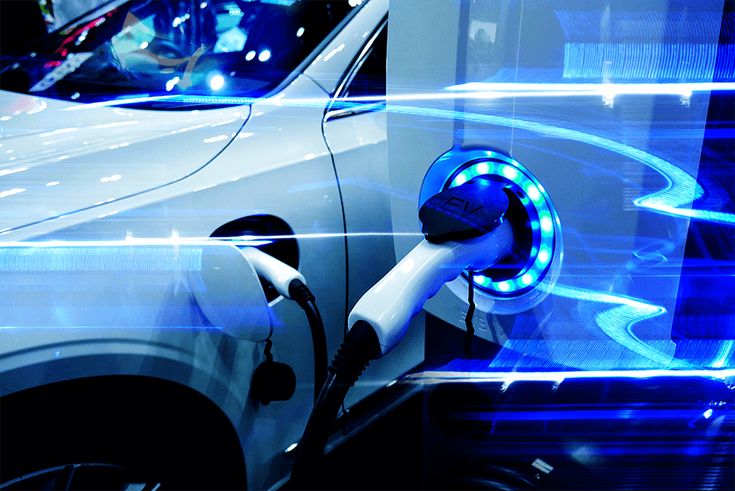A short-term future is not understood without a total integration of the electric vehicle into the electric system. In this blog, we are going to review some experiences that are already being carried out in this sense.
To start with, one example is the new Renaul Zoe. In this case, Renault company has partnered with the Vulog platform to use its AiMA platform, which is already deployed in more than 25 car sharing services around the world. The range of possibilities here is immense as it does not only involve the sale of electric vehicles for their use in fleets, but also private users can take advantage of this technology to make their vehicle available on this type of platform, thus increasing its use and receiving remuneration for it but once the vehicle is in this type of platforms their data could be shared with other kind of platforms like Plexigrid to manage the flexibility of the vehicles and provide services to aggregators.

A short-term future is not understood without a total integration of the electric vehicle into the electric system. In this blog, we are going to review some experiences that are already being carried out in this sense.
To start with, one example is the new Renaul Zoe. In this case, Renault company has partnered with the Vulog platform to use its AiMA platform, which is already deployed in more than 25 car sharing services around the world. The range of possibilities here is immense as it does not only involve the sale of electric vehicles for their use in fleets, but also private users can take advantage of this technology to make their vehicle available on this type of platform, thus increasing its use and receiving remuneration for it but once the vehicle is in this type of platforms their data could be shared with other kind of platforms like Plexigrid to manage the flexibility of the vehicles and provide services to aggregators.
Car sharing is not only a revolution in urban e-mobility but also in electric flexibility generation. As it was mentioned and demonstrated, vehicle to grid (V2G) technology is another game changer in this sector. It goes one step further than the so-called smart charging also called (V1G). This technology will undoubtedly promote the sale of electric vehicles by also increasing the degree of battery use, and allowing end users to recover the cost differential of the electric vehicle with respect to conventional ones. Although V2G technology has been discussed in academic forums for more than a decade, opponents of this technology put forward the following arguments against it:
- An increase in battery degradation.
- The need to develop these applications in a coordinated manner between actors in the electricity
- sector and vehicle manufacturers.
- The absence of regulation in the best of case or even the prohibition of the use of this technology
- in the worst of case.
- The non-existence of platforms capable of managing millions of devices simultaneously in real
At present, these arguments are no longer valid. Regarding the increase in battery degradation, , it is clear that the number of charge cycles of a battery is finite and that a priori we could think that the use in V2G applications would imply a reduction in the life cycle of the device. However, recent studies have shown that this a priori obvious assumption may not be true. For example, the following articles [1,2] show that a controlled discharge of the battery may not only not shorten its life but also extend it:
“Extensive simulation results indicate that if a daily drive cycle consumes between 21% and 38% state of charge, then discharging 40%–8% of the batteries state of charge to the grid can reduce capacity fade by approximately 6% and power fade by 3% over a three-month period”
In addition to these arguments, manufacturers such as TESLA who denied the viability of this technology
have recently changed their arguments to defend it. For example, the on-board architecture of the new TESLA model 3 allows for controlled bi-directional energy flow which means it is designed to be able to participate in V2G applications [3]. TESLA has broken the barrier of one million newly manufactured electric cars and since it services its customers through its network of chargers, this has made it one of the largest energy suppliers in the world. The company’s philosophy when it comes to offering a comprehensive service to its customers is clear from the fact that the company is making moves to become not only a retailer but also a provider of aggregation services. Recently it has carried out a survey among its clients in the German market asking for their opinion on the possibility of remotely controlling the charge of the vehicles [4]
This is a clear case of V1G implementation. Similar movements have been observed by TESLA in other markets such as the UK, where TESLA already applied for the electricity provider license [5]. Regarding the need to develop this type of initiative with the collaboration of other electricity sector agents, this is true, but it should not be taken as something negative or a disadvantage. Currently, the manufacturer that has advanced the most in V2G technology is Nissan, already incorporating this functionality in standard models. In this case, Nissan markets this technology under the names of Vehicle-to-Grid (V2G) and Vehicle-to-Home (V2H). One of its commercial claims is that a 40kWh battery from a fully charged Nissan Leaf could supply an average home for 4 days [6]. This is a clear example of the intentional islanding product described before. In Spain, Nissan has signed a collaboration agreement with ENDESA for the development of this technology. In Italy, the agreement has been between Nissan and Enel Energia, similar agreements and pilots have also been launched in Denmark (together with Enel and Nuvven). Honda has had this technology in place since 2017, when it launched its own V2G recharging point model [7,8].
With regard to the lack of regulation, the European Directive EU 944/2019 has turned the regulatory framework upside down by introducing changes in the electricity sector which had not been so radical since its liberalization in 2002. The figure of the aggregator has been defined for the first time and not only that, but the directive promotes and protects its implementation in the short, mid and long term as an optimum means of managing flexibility in the system and increasing its overall efficiency. In the short term, this directive will have to be transposed into law in the different countries of the EU so that the regulatory barrier to the implementation of innovative V2G-type solutions will simply disappear.
Finally, it must be taken into account that the management of this type of application implies very high requirements in terms of communications, data management and cyber security. A few years ago, the existing solutions for this type of development were very limited and practically non-existent. Today there is a vast catalogue of IoT devices, big data tools, open communication protocols and standard libraries for the development of artificial intelligence algorithms and monitoring systems, so this technological “bottleneck” has also disappeared. Platforms such as the one developed by Plexigrid allow this type of application to be easily implemented. This technology has already been deployed in networks with more than 2 million nodes and 660,000 users.
In conclusion, we can say that the integration of electric vehicles in the electrical system is not only an option but a real priority for the technical, economic and environmental sustainability of the system. A coordinated integration that exploits all the capacities of digitalisation of the network and the market mechanisms available can be beneficial for each and every one of the agents in the electrical system and especially for the final consumer.
[1] Morris, C. “New Study: V2G may not degrade EV battery life – It might actually extend it”, CHARGED – Electric Vehicles Magazine, August 24th, 2017https://bit.ly/3iEQ2R9
[2] Kotub Uddin, Tim Jackson, Widanalage D. Widanage, Gael Chouchelamane, Paul A. Jennings, James Marco, “On the possibility of extending the lifetime of lithium-ion batteries through optimal V2G facilitated by an integrated vehicle and smart-grid system”, Energy, Volume 133, 2017.
[3] Schmidt, B., “Tesla’s switch on Vehicle-to-grid technology is big news for clean energy shift”, The Driven, May 20th, 2020. https://bit.ly/34xVlg3
[4] Diermann, R. “Tesla may become power provider in Germany”, PV Magazine, August 6th, 2020 https://bit.ly/2SzXnGR
[5] Tesla applies for UK electricity provider license, The Telegraph, May 2nd, 2020 https://bit.ly/2SCr0rb
[6] Nissan web page: https://bit.ly/2SB863O
[7] En su centro de Alemania, Honda desarrolla su propio punto de recarga V2G, hibridoselectricos.com https://bit.ly/36Hysta
[8] Honda Reveals Charging Solutions for Home, Public & DC/V2G, InsideEVs https://bit.ly/36ItT22

